Cruising Keel Sailboat Safety Inspection Checklist Before Leaving the Dock
Share
Before heading out on the water, conducting a thorough safety inspection of your cruising keel sailboat is essential. This suggested checklist ensures that your vessel, equipment, and crew are prepared for a safe voyage.
1. Hull and Exterior Inspection:
- Inspect the hull for cracks, blisters, or signs of damage.
- Check keel bolts and fittings for signs of wear or corrosion.
- Inspect through-hull fittings for leaks or damage.
- Check rudder and steering system for smooth operation and any signs of wear or stiffness.
- Ensure the anchor and rode are securely stowed, and test the windlass (if applicable). Check anchor shackle bolt. Ensure bitter end of anchor rode is secured. Attach anchor seizing wire.
2. Rigging and Sails:
- Inspect standing rigging (shrouds, stays) for signs of wear, rust, or fraying.
- Check running rigging (sheets, halyards) for chafing or damage.
- Examine sails for wear (tears, loose stitching) and ensure battens are in place.
- Test all winches, clutches, and blocks for smooth operation.
3. Engine and Fuel:
- Check engine oil, coolant, and transmission fluid levels.
- Inspect fuel lines and connections for leaks or corrosion.
- Ensure fuel tank is adequately filled for the trip.
- Test engine start and ensure it's running smoothly.
- Ensure proper ventilation in the engine compartment.
- Check prop shaft connecting bolts. If they feel loose, tighten them before you leave the dock. It's easier to tighten them while at the dock than when underway.
- If applicable, check the galley stove fuel (such as propane tanks).
4. Electrical System and Navigation Lights:
- Test navigation lights (bow, stern, steaming light, masthead, and anchor lights).
- Test cabin lights (including in the salon and in the berths)
- Check the battery charge and connections for corrosion.
- Test the bilge pump and automatic float switch for proper operation.
- Check VHF radio for signal and proper functioning.
5. Safety Equipment:
- Ensure personal flotation devices (PFDs) are available for each person on board.
- Check fire extinguishers for proper charge and expiration date.
- Test the horn and whistle for audible sound. (consider having an extra air horn)
- Inspect the first aid kit and restock if necessary.
- Check flares and signaling devices for expiration dates and functionality.
- Ensure lifelines and jacklines are in place and secure. (including lifelines where you step aboard the boat)
6. Navigation and Instruments:
- Test GPS, radar, and chart plotter for accurate readings.
- Verify depth sounder and speed instruments are working properly. Confirm how the depth sounder's transducer is calibrated (from the waterline, hull, or keel )
- Ensure paper charts and navigation tools (compass, dividers) are on board.
- Check the emergency tiller and ensure it's easily accessible.
7. Water and Waste Systems:
- Check freshwater tank levels and test all faucets for water pressure.
- Inspect the marine head and ensure waste systems are functioning.
- Check bilge water levels and ensure no unusual amounts of water.
8. Weather and Emergency Preparedness:
- Check weather forecast for the duration of the trip (Weather, wind velocity, and direction. Swell direction, height, and interval).
- Ensure safety harnesses and tethers are available for each crew member.
- Review emergency procedures (man overboard, fire, abandoning ship) with the crew.
- Confirm the EPIRB or PLB (if available) is functional and registered.
9. Documentation and Legal Requirements:
- Ensure vessel registration and insurance papers are on board.
- Check the Coast Guard safety decal (if applicable) and compliance.
- Ensure logbook and charts are updated for your voyage.
Completing this checklist before leaving the dock ensures that your sailboat is safe, seaworthy, and ready for the journey ahead. Do you include other items in your safety inspection checklist? Post a comment below.








